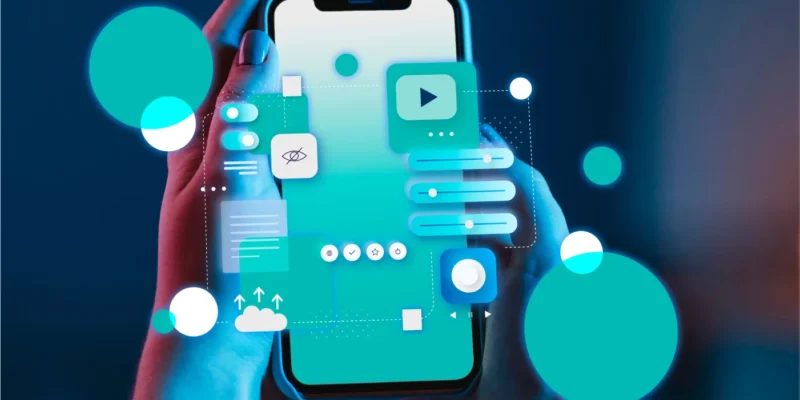
In today’s digital age, mobile applications have become an integral part of our daily lives. Whether you’re ordering food, tracking your fitness goals, or connecting with friends, there’s a mobile app for almost everything. Behind this app ecosystem is a world of mobile app development that encompasses a wide range of types and approaches. Let’s explore the various types of mobile app development to gain a better understanding of this dynamic industry.
Popular Types of App Development
1. Native App Development
Native app development involves creating applications specifically tailored for a particular mobile operating system, such as iOS (for Apple devices) or Android (for Android-based devices). Native apps are built using platform-specific programming languages and tools, like Swift or Objective-C for iOS and Java or Kotlin for Android. These apps offer a high level of performance and can access device-specific features seamlessly.
Pros:
- Excellent performance and responsiveness.
- Access to device hardware and features.
- Native look and feel for users.
Cons:
- Development for multiple platforms requires separate code bases.
- Higher development costs and longer time to market.
2. Cross-Platform App Development
Cross-platform app development allows developers to create apps that can run on multiple operating systems with a single code base. Popular cross-platform development frameworks like React Native, Flutter, and Xamarin have gained popularity in recent years. They enable developers to write code once and deploy it across iOS and Android, saving time and resources.
Pros:
- Faster development and reduced costs compared to native development.
- Single code base for multiple platforms.
- Rapid prototyping and updates.
Cons:
- Slightly lower performance compared to native apps.
- Limited access to some device-specific features.
3. Progressive Web Apps (PWAs)
Progressive Web Apps are web applications designed to work on mobile devices. They offer a web-like experience but can be installed on a user’s home screen like native apps. PWAs use web technologies such as HTML, CSS, and JavaScript and are known for their speed and offline capabilities. They are accessed through web browsers, making them platform independent.
Pros:
- No need to install from app stores.
- Accessibility on various platforms.
- Lower development and maintenance costs.
Cons:
- Limited access to device features compared to native apps.
- Limited to web browser capabilities.
4. Hybrid App Development
Hybrid apps combine elements of both native and web app development. They are built using web technologies (HTML, CSS, JavaScript) and then wrapped in a native container, allowing them to be distributed through app stores. Platforms like Apache Cordova and Ionic facilitate hybrid app development.
Pros:
- Single code base for multiple platforms.
- Access to device features through plugins.
- Cost-effective and quicker development.
Cons:
- Performance may not match native apps.
- Limited access to advanced device capabilities.
5. Wearable App Development
With the rise of smartwatches, fitness trackers, and other wearable devices, wearable app development has gained prominence. These apps are designed to run on wearable devices and provide users with quick access to essential information and features, such as health data, notifications, and remote control of connected devices.
Pros:
- Targeted at a growing niche market.
- Integration with sensors and health data.
- Enhanced user experience for wearable users.
Cons:
- Limited screen real estate and interaction options.
- Smaller user base compared to smartphones.
6. Augmented Reality (AR) and Virtual Reality (VR) App Development
AR and VR apps offer immersive experiences by overlaying digital content onto the real world (AR) or creating entirely virtual environments (VR). These apps are used for gaming, education, training, and various industries. AR development often involves tools like ARKit and ARCore, while VR development relies on platforms like Unity3D and Unreal Engine.
Pros:
- Immersive and engaging user experiences.
- Wide-ranging applications across industries.
- Growing market with evolving technologies.
Cons:
- Requires specialized knowledge and equipment.
- High development costs and longer production times.
7. Internet of Things (IoT) App Development
IoT apps connect mobile devices to smart objects and devices, enabling users to control and monitor their surroundings remotely. These apps are used in home automation, healthcare, industrial settings, and more. IoT development involves communication protocols, APIs, and security considerations.
Pros:
- Enhanced convenience and control for users.
- Opportunities for innovation in IoT devices.
- Integration with various industries and applications.
Cons:
- Complex development due to interoperability challenges.
- Security and privacy concerns with IoT data.
Concluding Thoughts
In conclusion, the world of mobile app development is incredibly diverse, offering a multitude of options for developers and businesses alike. The choice of development type depends on factors like the target audience, budget, project requirements, and time constraints. Whether you opt for native, cross-platform, web, hybrid, or specialized development like wearable, AR, VR, or IoT, understanding the strengths and limitations of each approach is essential to create successful mobile applications that meet the needs of users in today’s mobile-first world.

